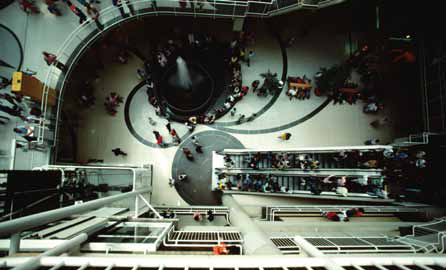 Fixed Dome Differentiators
Fixed Dome Differentiators
Fixed dome selection looks at image quality, resolution, progressive or interlaced, and sensitivity, Pigram said. “Linked to those is whether you have a sophisticated DSP with noise reduction, which is related to performance.”
A dome's back-box construction will affect heat dissipation. “Too many ICs will overheat the camera and shorten its lifespan,” Chang said. Inferior materials will also cause interference, such as a bad lens connector, which should be inspected before purchase.
One way to infer how hot a dome might get is by looking at power usage. “Low power consumption is important to save power, but also for thermal operation,” said Jeff Corrall, Product Line Manager for Edge Devices, March Networks. “If you heat up a camera, it could malfunction. Or it may function properly, but its overall life cycle is reduced if the components are outside temperature specifications.”
A more prosaic benchmark is the dome's ability to lock position, said Ian Crosby, Product Marketing Manager for CCTV, Bosch Security Systems. The better the dome stays put, the better it will prevent shock and vibration effects.
Processors
 A dome's processor determines its functionality. As chips have gotten faster and smaller, more features are now built into dome cameras, such as slow shutter, wide dynamic, Sens-up or digital noise reduction. “Some features are better on the edge, but they will depend on your computing power,” Huang said. “You need to select a faster or bigger CPU for analytics.”
A dome's processor determines its functionality. As chips have gotten faster and smaller, more features are now built into dome cameras, such as slow shutter, wide dynamic, Sens-up or digital noise reduction. “Some features are better on the edge, but they will depend on your computing power,” Huang said. “You need to select a faster or bigger CPU for analytics.”
A dome line may be divided into high-end and budget models by DSP. “Security is a relatively low-volume business, but requires many types of cameras,” Huang said.
Axis designs its own ASIC chip and this gives the company an edge in the market, said Erik Fr?nnlid, Director of Product Management, Axis Communications. Its processor features software for image correction, such as a corridor format that optimizes scenes that are more vertical than horizontal, such as hallways or tunnels. Modular designs and use of the latest technologies, as well as good forecasting and planning, allow Axis to source components in large quantities, which keeps prices manageable, Fr?nnlid added.
Samsung Techwin also has its own semiconductor foundry, using the same DSP chipset for its dome range. “We have ranges of both analog and network domes, including megapixel versions, arriving very soon,” said James Smith, European Marketing Manager.